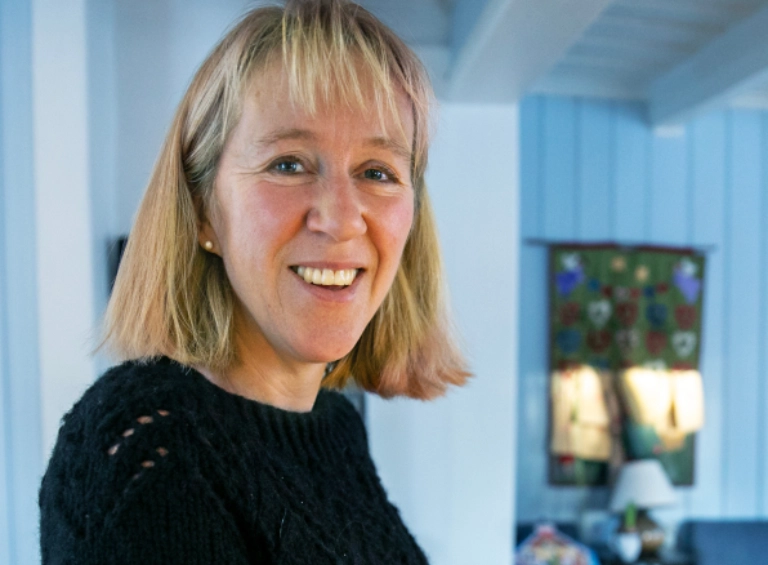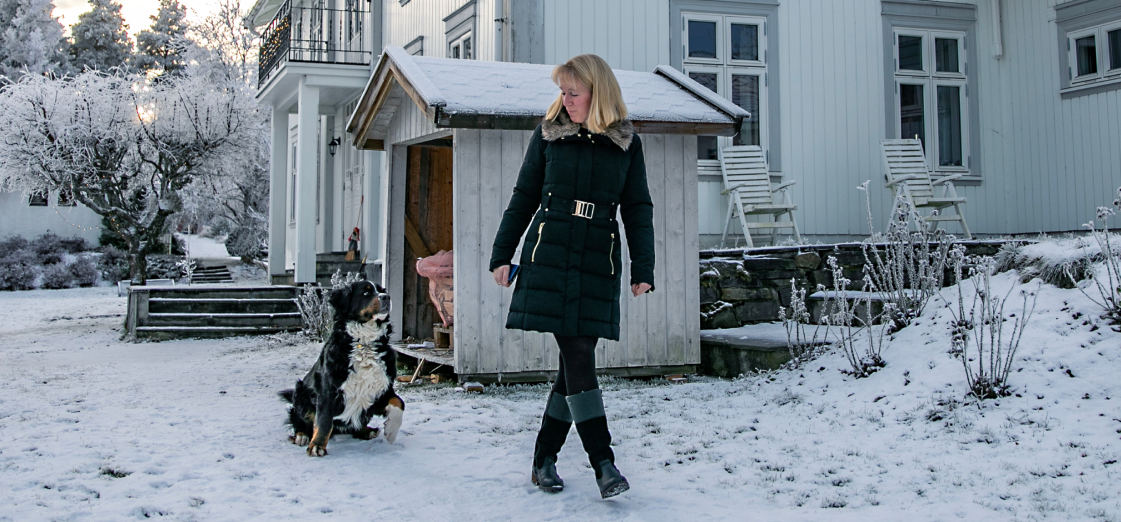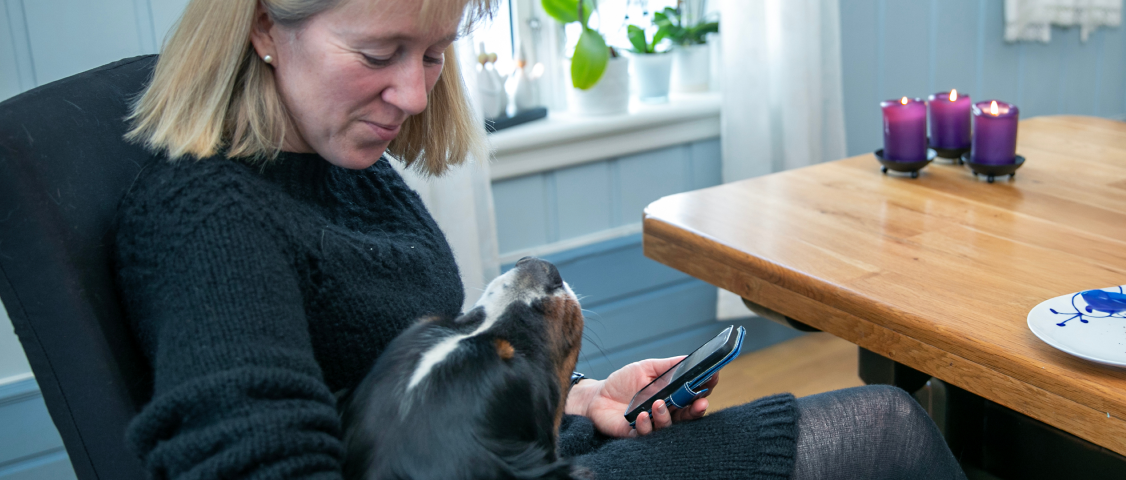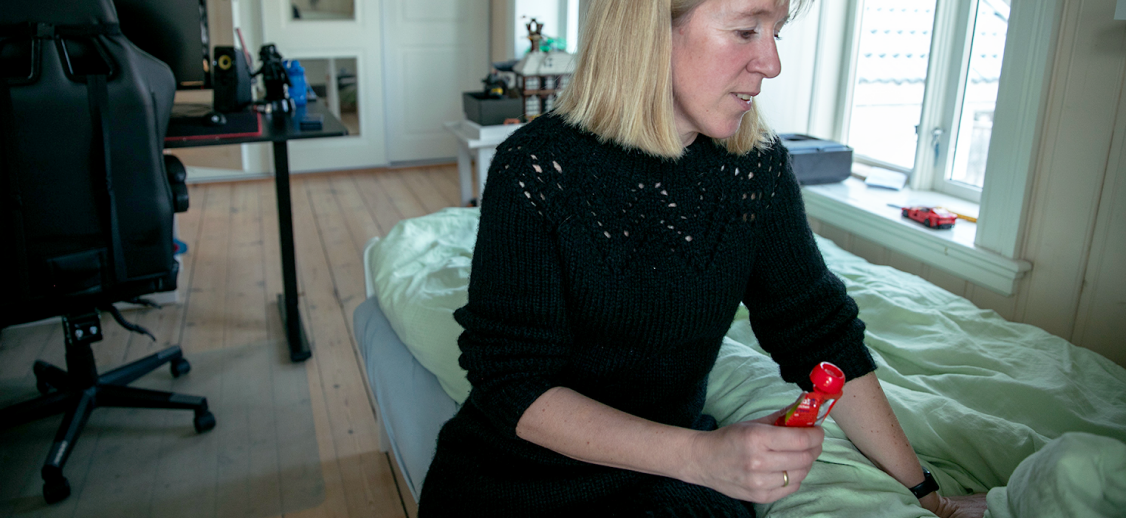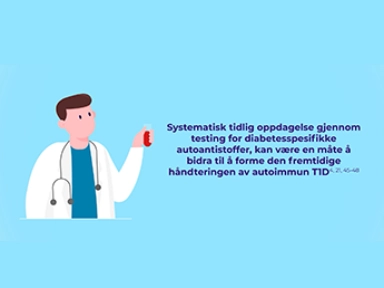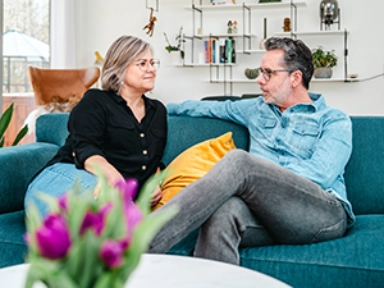Ingunn’s Son Was Diagnosed with Type 1 Diabetes: "I Wish I Had Known More in Advance"
Unpredictable blood glucose readings, extreme fatigue, and an overwhelming fear of low blood glucose—this is how Ingunn describes the early days after her son, Olav, was diagnosed with type 1 diabetes. It has been a time of sleepless nights and many worries. But it has also been a time of learning, adaptation, and strengthened family bonds.
On a beautiful farm outside Vikersund, Ingunn, a 47-year-old school health nurse, lives with her husband, Roger, their three children aged 12, 15, and 17, and a large, peaceful giant of a dog. There is plenty of space both inside and outside for this active family— a family whose life was completely changed nine years ago.
“Olav seemed unusually tired, urinated more than usual, and drank large amounts of fluids. At first, there were no major alarm bells ringing. Kids often get tired and sick, especially at that age. I just thought he was coming down with something.”
A Growing Suspicion
The family went to the theater one Saturday just before Christmas. Once again, Olav was very tired. He ate plenty of pizza and candy but fell asleep unusually quickly once they got home. Ingunn thought it was just a combination of a long day and a mild cold he had been dealing with.
“But by Monday, the signs returned even stronger: He drank far more than normal and kept going to the bathroom.”
As a school health nurse, Ingunn had some knowledge of diabetes. It wasn’t an intuitive thought, but a cautious suspicion started creeping in. She searched for symptoms online, and her suspicion grew stronger.
Turned Away Twice
“I called the doctor and asked to come in for a blood test. We were given an appointment the following week, but I felt it was urgent and went there immediately. His blood glucose level was at 25. We were sent straight to the hospital, but by then, his blood glucose had normalized, and we were sent home.”
It was just six days before Christmas, and Ingunn didn’t want to spend the holidays in the hospital. So, they went to have lunch to see if it would change anything.
“That caused his blood glucose to spike again. Looking back, it scares me to realize that we were actually turned away twice. If we had waited a little longer, his own insulin production would have decreased even more. Regardless, he developed highly unstable blood glucose, which he has had to live with ever since.”
Being a Parent to a Child with Type 1 Diabetes
The diagnosis was confirmed at the hospital, and Ingunn describes the first months and years as a constant rollercoaster.
“There was carb counting, insulin dose adjustments, sleepless nights, unpredictable blood glucose levels, and a constant fear of low blood glucose. It was overwhelming, but I didn’t have an emotional reaction right away. There was simply no time for that, with three small children and everything that needed to be done.”
For many years, the nights were exhausting, with constant monitoring and regulation of blood glucose levels.
She documented three weeks of nighttime blood glucose readings to track variations: One night, it was at 26, another night at 3, and every other night somewhere in between.
“You wouldn’t believe how tired you can get! There was no clear pattern in what Olav ate or did. I started experiencing ringing in my ears, dizziness, and brain fog. At one point, I felt I simply wasn’t fit to drive due to the lack of sleep and rest.”
Lack of Support
At first, Ingunn took on the entire responsibility while her husband worked and traveled frequently. It was an arrangement they had agreed was best.
“I didn’t realize how exhausting and all-consuming this would be in the beginning, so I thought it was the best solution. I wish I had known more in advance. No one told me what to expect—there was very little information from both the hospital and the doctor. In many ways, it has been a grieving process.”
“By the spring of 2017, I was completely exhausted and desperate, but I had to go to work because the welfare system doesn’t support parents of children with type 1 diabetes. Their suggestion was to send me to a sleep course! But how could I sleep? I had to watch over him. Then they suggested I take unpaid leave. The solution was for us to share the responsibility more equally as parents.”
The Loop Pump: A Turning Point
If you meet Ingunn, you’ll likely notice that she often has her nose buried in her phone. It’s not because she’s disinterested, playing games, or checking the latest news. It’s because she constantly monitors her youngest son's blood glucose—whether he’s at school, sports, camp, or home. She can do this via an app on her phone.
“For us, the turning point came with the loop pump. It’s essentially an artificial pancreas. Before, I was Olav’s pancreas—a rather ineffective one, I might add.”
They were among the first in Norway to gain access to this technology. The hospital was initially skeptical, but the loop pump made an enormous difference in their daily lives. blood glucose levels became more stable, and the parents finally got better sleep.
“It’s a sensor and a pump that can be adjusted via a computer or mobile phone, and it requires regular fine-tuning. We set it up ourselves. There are newer models now with tubing as standard, but we’ve stuck with the one we originally got.”
A Family Matter
Although Olav is now 12 and takes more responsibility for his diabetes management, it remains a family effort.
“I still monitor him through my phone, but the loop has given both him and us more freedom. Now, he can go on school trips while I monitor from home, and the adults accompanying him help with meals and carb availability during the day.”
Ingunn still takes the night shifts. Every fall, they train the teachers, emphasizing two key points: Monitor blood glucose and always have carbs available. But despite the challenges, there have also been positives.
“Olav and I work really well together, and it has brought us very close. I’m incredibly grateful for that. It has been a tough journey, but also full of wonderful moments. It has truly been quite the experience, and we’ve learned so much along the way.”
Daily Life with Type 1 Diabetes
The family has now lived with Olav’s diagnosis for almost nine years. Humans are adaptable, but their learning curve has been steep, as Olav’s blood glucose remains exceptionally unstable. According to the hospital, he is one of only 3-4 children with such unstable blood glucose over such a long period.
“In 2020, I had my first full night of sleep in five years. So yes, it requires a lot from us. On top of his diabetes, he was also diagnosed with celiac disease. That has made it impossible for us to let others, like grandparents or babysitters, take over.”
“Even small things make a difference. Jumping on a trampoline or doing parkour, for example, is a ‘carb killer.’ He needs carbs readily available at all times, including at night. We installed a small fridge in his room so he can have a cold smoothie ready when his phone alerts him. That way, I don’t have to run down to the kitchen, and I can quickly give him what he needs.”
Screening
Five years after Olav’s diagnosis, they were invited to participate in a research project screening for type 1 diabetes risk. Ingunn and their children were invited—her husband, Roger, was over 45 and too old to participate.
“I wasn’t sure if I wanted to know if the other kids were at risk. We already had our hands full with Olav. But we frequently checked their blood glucose anyway, so we felt we had control. What convinced me was the risk of a late diagnosis if they did develop it. Fortunately, they were not in the high-risk group. But there are no guarantees.”
Advice and Reflections
Ingunn has a clear message for other parents whose child is diagnosed with type 1 diabetes: “Get a pump with an integrated loop or learn how to set one up yourself. Train everyone around your child, including teachers and daycare staff. And make sure they aren’t afraid to physically assist the child. We experienced that in our daycare—they were hesitant, and our child felt it. Thankfully, in primary school, we had a teacher who stepped up and showed confidence. That made a huge difference.”
A survey highlights the emotional impact on relatives when their child or partner is diagnosed with type 1 diabetes:
The survey also revealed their experiences as relatives during the initial period after the diagnosis:
Type 1 Diabetes Survey conducted by Sanofi in Norway, Denmark, Sweden, Finland, Belgium, and the Netherlands, 2024.

